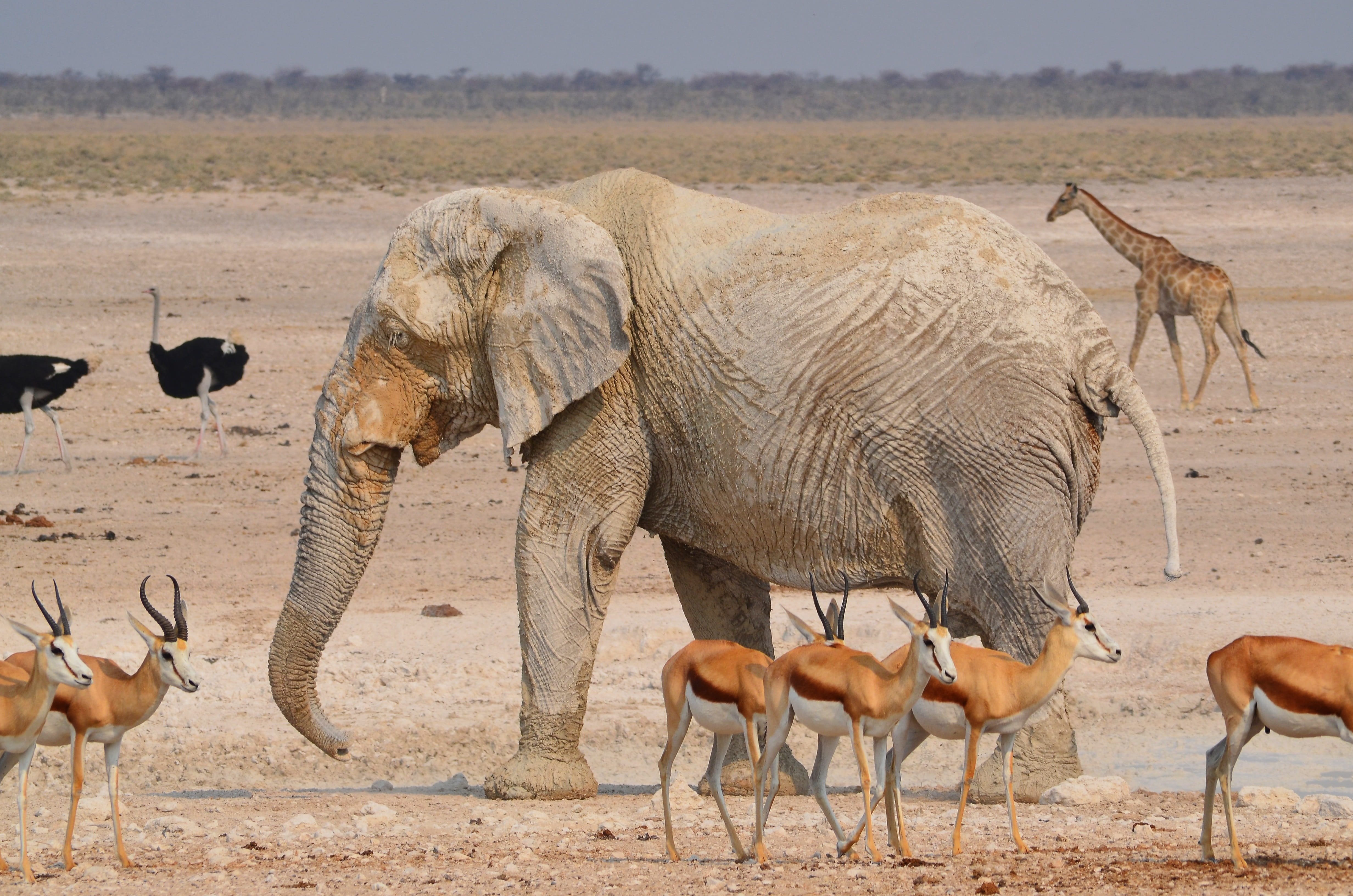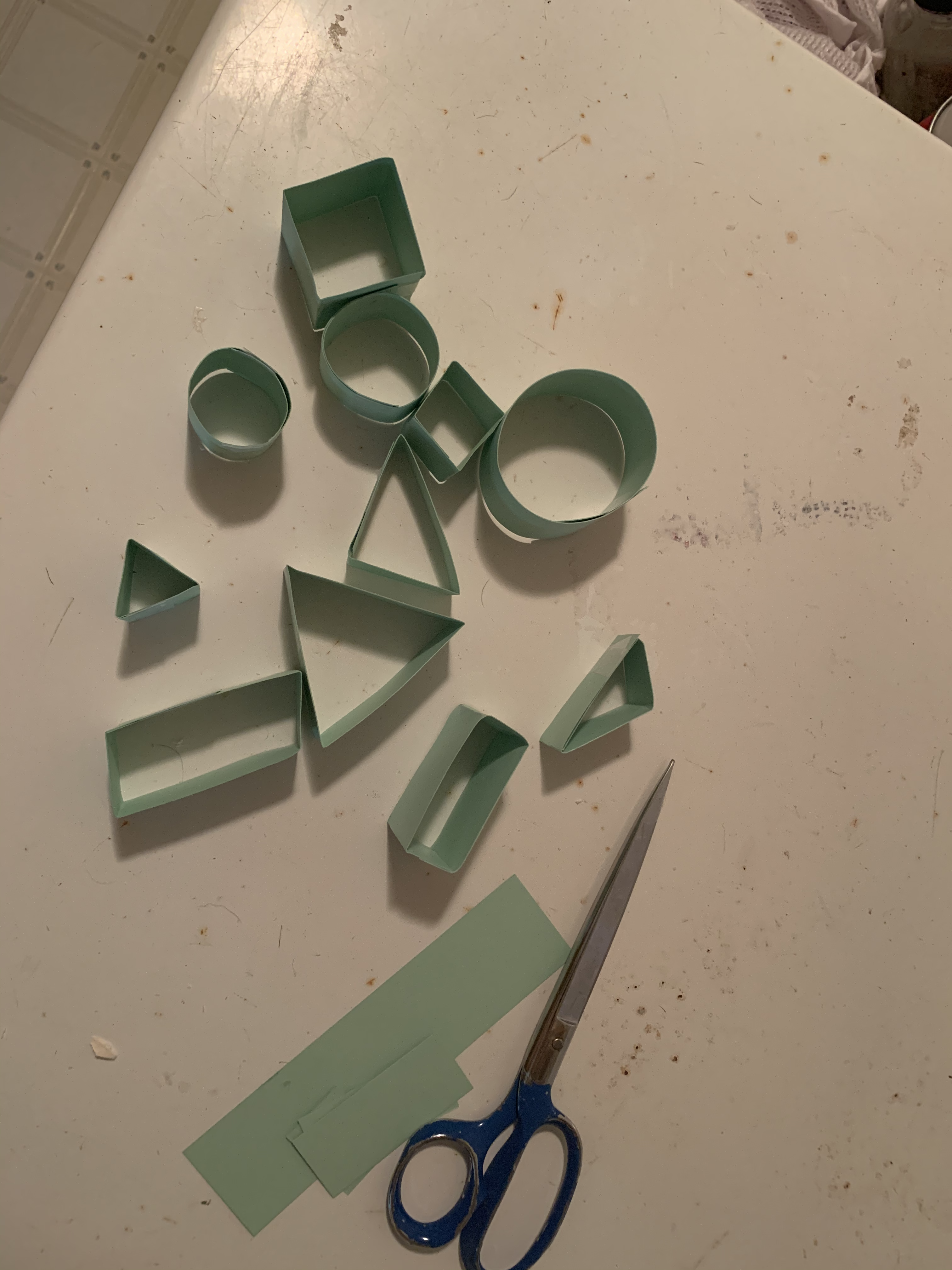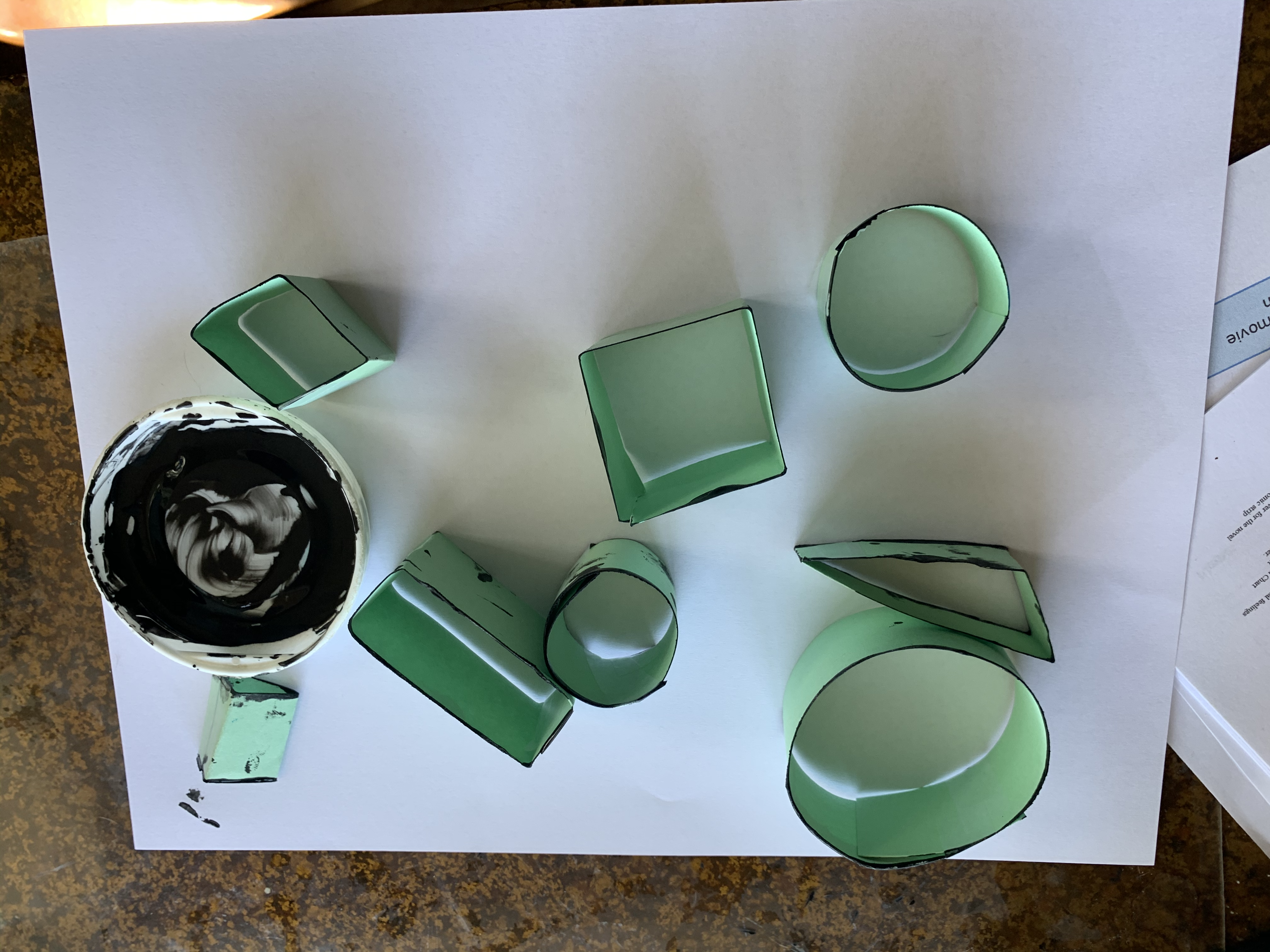Lesson 15
Animal Shape Stamp Art (optional)
Warm-up: Notice and Wonder: Animals at the Watering Hole (10 minutes)
Narrative
Launch
- Groups of 2
- Display the image.
- “What do you notice? What do you wonder?”
- 30 seconds: quiet think time
Activity
- “Discuss your thinking with your partner.”
- 1 minute: partner discussion
- Share and record responses.
Student Facing
What do you notice?
What do you wonder?

Student Response
For access, consult one of our IM Certified Partners.
Activity Synthesis
- “There are many different animals in this picture. There’s an elephant, some ostriches, some antelopes, and there is a giraffe in the back. What are some other animals that you know?”
- 30 seconds: quiet think time
- 30 seconds: partner discussion
- Share and record responses
- “What shapes could we put together to make the giraffe?” (We could use a long rectangle for the neck and a little triangle for its head, a circle for its body and skinny rectangles for its legs and tail.)
Activity 1: Animal Print Making (20 minutes)
Narrative
In this activity, students use shapes to compose animals. Students can create the animal in their student book or on a piece of cardstock or construction paper. They practice describing their animals using shape names, positions of shapes, and the number of shapes (MP6). When students recognize mathematical features of objects in the real world, they model with mathematics. (MP4)
Shape Stamp sets are prepared by the teacher prior to the lesson.


Consider covering the work area or giving each group of students a paper plate to place their stamps on once they have paint on them.
Advances: Representing, Conversing
Supports accessibility for: Memory, Organization
Required Materials
Materials to Gather
Required Preparation
- Make shape stamps from strips of card stock for each group of 4.
- Pour paint onto plates for each group of 4.
Launch
- Groups of 4
- Give each group of students a set of shape stamps and a paper plate with black paint.
- “You will use these stamps to make an animal. I am going to make a cat. What shapes should I use?” (Circle for the head, triangles for the ears, rectangles for the legs and tail.)
- “If I want to make a circle for the cat’s head, which stamp should I use?”
- Invite students to point to the correct shape.
- Demonstrate dipping the stamp into the paint and pressing it on the paper.
- “Take turns using the shape stamps with your group. You only need a little bit of paint for each stamp.”
Activity
- “Which animal do you want to make? What shapes will you use to make the animal?”
- 30 seconds: quiet think time
- 10 minutes: small-group work time
Student Facing
Use the shape stamps to create an animal.
Student Response
For access, consult one of our IM Certified Partners.
Activity Synthesis
- “Show a partner the animal you made. Tell your partner the shapes you used to make your animal and the part of the animal each shape represents.”
- 30 seconds: quiet think time
- 2 minutes: partner discussion
- “Tell your partner about the shapes you used using ‘more’ or ‘fewer’. For example, did you use fewer rectangles or circles to make your animal?”
- 30 seconds: quiet think time
- 2 minutes: partner discussion
Activity 2: Mathematical Questions About Our Animals (20 minutes)
Narrative
Launch
- Groups of 2
- Invite a student to share the animal they created in the previous activity. Display the animal for all to see.
- “What questions could we ask about this animal?”
- 30 seconds: quiet think time
- 1 minute: partner discussion
- Share and record responses.
- “We are going to ask each other questions about the shapes we used in our animal pictures. What mathematical questions could we ask?”
- Share and record responses.
- If needed, prompt students to develop different types of mathematical questions. For example:
- “What ‘how many’ questions can we ask about the animal?”
- “Are there questions that we can ask using ‘fewer’?”
- “Do you have any questions about which shapes they used?”
- “What questions can we ask about where we can find certain shapes in the animal?”
- “As you walk around to see the animals that your classmates made, ask them at least 2 questions.”
Activity
- Invite half of the class to stand next to their animal. Invite the other half of the class to walk around and look at each animal.
- 7 minutes: gallery walk
- Switch groups.
- 7 minutes: gallery walk
Student Response
For access, consult one of our IM Certified Partners.
Activity Synthesis
- Invite 2 students to share and display the animal that they created.
- “What is the same about the animals that they created and the shapes they used? What is different?”
Lesson Synthesis
Lesson Synthesis
“Today we used shapes to create animals.”
Display the image from the warm-up.

“Which of these animals do you think would be easiest to make with shapes? Why? Which animal would be the hardest to make?”
“Which shapes would you use to make an elephant?”